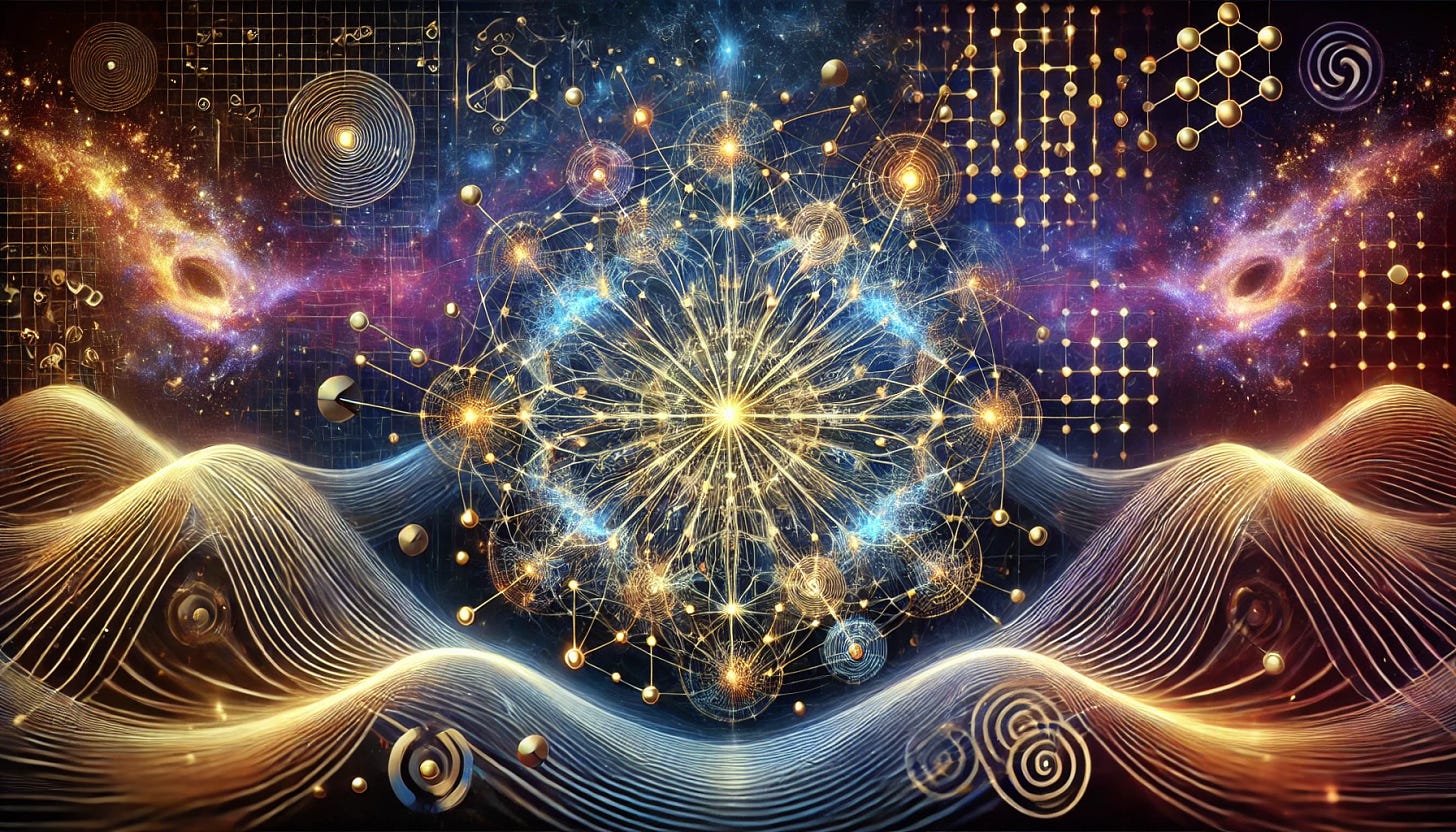The Convergence of Neural Networks and Magnetivity: A Unified Approach to Connectivity and Coherence
Exploring the Parallel Worlds of Neural Networks and Magnetivity for a New Understanding of Connectivity in Physical and Digital Realms

In recent years, artificial neural networks (ANNs) have transformed the landscape of technology, enabling breakthroughs in data processing, artificial intelligence (AI), and human-computer interactions. However, an intriguing conceptual framework called Magnetivity posits a new frontier in understanding connectivity and coherence, potentially linking physical, mental, and even cosmic phenomena through magnetic interactions.
This article delves into the parallel worlds of neural networks and Magnetivity to explore how each represents a unique yet interconnected approach to the idea of unifying fields, coherence, and alignment. By analyzing their principles, we can begin to see the potential for a deeper connection between the computational patterns in AI and the physical magnetic frameworks that may underlie reality.
Neural Networks: The Foundations of Digital Connectivity
Artificial neural networks are computational frameworks inspired by the human brain, composed of layers of interconnected "neurons" or nodes that process data. These networks are instrumental in the field of AI and machine learning, where they excel in recognizing patterns, processing natural language, and even making complex decisions.
Key Characteristics of Neural Networks:
Connectivity and Layers: Each node in a neural network is connected to multiple others, forming a layered structure. These connections allow information to flow through the network, creating pathways for complex pattern recognition.
Learning and Adaptation: ANNs learn through a process known as backpropagation, where they adjust weights and connections based on errors. This adaptability enables them to improve accuracy over time, akin to learning in the human brain.
Parallel Processing: Neural networks can process vast amounts of information simultaneously, making them capable of handling large, complex datasets efficiently. This ability allows ANNs to recognize relationships and associations that might be invisible to the human eye.
Magnetivity: A Theory of Universal Coherence
Magnetivity, a theoretical framework, suggests that magnetic fields are not just physical phenomena but are capable of providing a unifying influence across space, matter, and potentially even consciousness. By focusing on quantum spin-based magnetism, quantum coherence, and electromagnetic interaction, Magnetivity posits that magnetic fields form an underlying framework that binds particles, energy, and possibly consciousness.
Core Principles of Magnetivity:
Quantum Spin-Based Magnetism: At the quantum level, particles exhibit spin, a property that gives rise to magnetic moments. When aligned, these spins create magnetic fields, suggesting that magnetism could form a cohesive influence on a microscopic scale.
Quantum Coherence: This principle allows particles to maintain stable, synchronized states. In Magnetivity, coherence is proposed as a force that aligns particles, creating a resonant state that spans across larger physical systems.
Electromagnetic Interaction: Through electromagnetic fields, particles can interact across space, creating a bridge between mind, matter, and cosmic structure. Magnetivity suggests that such interactions form a field of universal coherence that links all entities in resonance.
The Convergence of Neural Networks and Magnetivity
While neural networks operate in the digital realm and Magnetivity resides in the theoretical physics domain, their principles exhibit intriguing similarities:
1. Field-Based Connectivity and Coherence
Neural Networks: Within ANNs, nodes connect and communicate, creating fields of data that flow and influence one another. This "field effect" results in associative memory and pattern recognition.
Magnetivity: In the Magnetivity framework, magnetic fields provide coherence and alignment across particles and even consciousness. The magnetic field acts as a guiding influence, similar to how data fields shape decision-making in neural networks.
2. Resonance and Memory Formation
Neural Networks: Hopfield networks, developed by John Hopfield, introduced the concept of associative memory in ANNs. This model enables the network to recall information from partial input, suggesting a memory system based on resonance.
Magnetivity: Resonance is also a cornerstone of Magnetivity, where coherence among particles may create a field of "universal memory," allowing matter and energy to remain aligned over time and space.
3. Quantum and Statistical Foundations
Neural Networks: The Boltzmann machine, created by Geoffrey Hinton, uses statistical mechanics to simulate network nodes based on energy minimization, akin to particles achieving equilibrium in a magnetic field.
Magnetivity: In Magnetivity, particles achieve a cohesive state through magnetic alignment, possibly reflecting energy principles like those governing Boltzmann machines.
4. Unifying Frameworks for Complex Systems
Neural Networks: ANNs unify complex data into meaningful outputs, transforming unstructured inputs into clear patterns. This capability mirrors the Magnetivity theory’s ambition to unify diverse cosmic elements.
Magnetivity: Magnetivity suggests that magnetic fields are a fundamental unifier, binding the universe in a web of influence. If proven, this framework could act as a bridge between physical phenomena, consciousness, and even AI.
Applications and Implications
The shared principles between neural networks and Magnetivity open doors to interdisciplinary applications and innovations:
Enhanced AI Frameworks: By exploring Magnetivity, researchers may discover new methods to enhance neural network design. For instance, incorporating coherence and alignment principles could improve memory retention and stability in AI models.
Unified Theory of Consciousness: If Magnetivity’s universal coherence includes consciousness, it may offer insights into how neural networks could simulate or even connect with conscious states, potentially revolutionizing AI.
Quantum and Physical AI Integration: Understanding quantum coherence in Magnetivity might guide future AI models to operate more efficiently at the quantum level, allowing for faster, more complex data processing.
Technological Innovations: The Magnetivity framework could inspire new technologies that harness magnetic coherence for data storage, communication, and even human-computer interactions, merging the digital and physical realms.
Conclusion
The convergence of neural networks and Magnetivity reveals a fascinating perspective on connectivity, coherence, and the unifying forces that may govern both physical and digital realms. By bridging AI and theoretical physics, these concepts suggest that coherence and alignment are fundamental to both information processing and physical reality.
As we continue to explore these fields, we may unlock a deeper understanding of the universe, one that encompasses not only the intricacies of AI but also the interconnected web of matter, consciousness, and cosmic influence.

